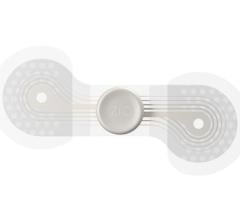
In the United States, the options currently available for cardiac ablation use thermal mechanisms to ablate tissue and cause cell death. Radiofrequency ablation (RFA) treatment uses energy to heat the tissue until it dies, resulting in its inability to transmit electrical signals that trigger arrhythmias. Cryoballoon ablation (CBA) uses a super-cooled balloon at the end of a catheter to freeze the tissue for the same result. Thermal methods for ablation have been successfully used for years; however, these methods carry uncommon yet serious risks.
Challenges
Safety issues — It is difficult to selectively target the treatment area with thermal energies. Heating or cooling delivered in ablation can expand away from the area in direct contact with the catheter and affect adjacent anatomical structures, causing collateral damage. Major adverse events associated with thermal ablation are esophageal fistula and phrenic nerve palsy.
Unintended energy delivery to the esophagus can lead to esophageal fistula – a hole between the atrium and the esophagus. Esophageal fistulas are rare but have an extremely high mortality rate and are a significant concern for physicians each time they are ablating in an area in close proximity to the esophagus.
Thermal-based ablations also can affect the phrenic nerve. This can lead to phrenic nerve palsy, which in severe cases can lead to paralysis of the diaphragm.
Efficacy and efficiency concerns —Thermal methods of ablation have been used in clinical practice for many years.
With RFA, the physician delivers multiple applications to areas in close enough proximity so that the lesions connect into a single, contiguous ablation line and isolate the signals triggering atrial fibrillation (AF). This method requires a point-by-point ablation procedure, which takes considerable time, focus, and precision. During the procedure, the physician must perform a balancing act between delivering enough energy to achieve the desired temperature for successful ablation of the target tissue without collateral damage to adjacent structures.
CBA uses a balloon catheter to plug or “occlude” the targeted pulmonary vein and deliver the therapeutic effect around the circumference of the vein in a single application. The effectiveness of this technique for pulmonary vein isolation is similar to that of RFA1,2,3 but with improved procedural efficiency.1 However, the procedure carries a higher risk of phrenic nerve damage than RFA3, so the physician and staff must be especially careful to monitor for this during the procedure.
While these methods have been in use for many years, there are opportunities for improvement.
Pulsed Field Ablation
Recent studies indicate that a new technology called pulsed field ablation (PFA) can mitigate many of the above-mentioned problem areas. PFA does not use thermal methods; rather, it uses an electrical field, which is applied to tissue in rapid bursts to cause irreversible electroporation (IRE). IRE causes cardiomyocyte cell membrane destabilization, leading to cell death and lack of conductivity. PFA can selectively target the cardiomyocytes while sparing the smooth muscle of the esophagus and the nerve axons – potentially eliminating those complications. It also has been shown to significantly limit PV narrowing compared to thermal ablation.4
Boston Scientific’s FARAPULSETM Pulsed Field Ablation System is one such PFA system. At the time of this article’s publication, it has been used in Europe in over 25,000 AF ablation cases. In the ADVENT clinical trial, there were no reports of complications associated with energy delivery– no esophageal fistula, unresolved phrenic nerve palsy, or PV stenosis.4 Additionally, the FARAWAVE Pulsed Field Ablation Catheter also showed efficacy rates that were on par with those of thermal ablation at 1 year, despite the data representing first-time use of the catheter by experienced thermal operators.4
FARAWAVE’s energy delivery is only 2.5 seconds – helping greatly reduce procedure times4 and potentially allowing physicians to work through their backlog of patients. As the AF population continues to grow, PFA systems such as FARAPULSE may serve a vital role in the management of this large cohort of patients.
The Future of Ablation
Ablation procedures for AF have come a long way since they were introduced in the 1980s with advances in RFA and CBA technology. However, PFA holds the promise of offering an optimized ablation therapy for AF. The benefits of PFA may in fact lead to a paradigm shift in cardiac ablation.
Editor's note: This blog is part of a series on cardiac ablation technology. Future blogs will address cryoablation and catheter technology.
References
-
Andrade J G, Champagne J, Dubuc M, et al. Cryoballoon or radiofrequency ablation for atrial fibrillation assessed by continuous monitoring: A randomized clinical trial. Circulation. 2019 Nov 26;140(22):1779-1788. doi: 10.1161/CIRCULATIONAHA.119.042622.
-
Hoffmann E, Straube F, Wegscheider K, et al. Outcomes of cryoballoon or radiofrequency ablation in symptomatic paroxysmal or persistent atrial fibrillation. Europace. 2019 Sep 1;21(9):1313-1324. doi: 10.1093/europace/euz155
-
Kuck KH, Brugada J, Fürnkranz A, et al. for the FIRE AND ICE investigators. Cryoballoon or radiofrequency ablation for paroxysmal atrial fibrillation. New England Journal of Medicine. 2016; 374:2235–2245. doi: 10.1056/NEJMoa1602014
-
Reddy V Y, Gerstenfeld E P, Natale A, et al. for the ADVENT Investigators. Pulsed field or conventional thermal ablation for paroxysmal atrial fibrillation. New England Journal of Medicine. 2023 Aug. 27. doi: 10.1056/NEJMoa2307291
Click here for FARAPULSE™ Pulsed Field Ablation System indications, safety & warnings
©2023 Boston Scientific Corporation or its affiliates. All rights reserved.
EP-1714805-AA



 September 12, 2025
September 12, 2025 









